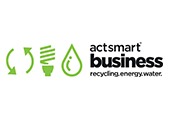‘Finding it hard to implement environmentally sustainable practices into your workplace? You’re not alone. One of the most challenging barriers to creating a more environmentally sustainable workplace is getting staff to change their behaviour.
Changing behaviour requires critical reflection of current behaviours. A quick audit, for example of how staff dispose of waste generated in the office will identify current behaviours. Once identified, encourage staff to analyse their own behaviour, thoughts and feelings about waste disposal and think about other staff behaviours in relation to their own. As a group encourage staff to discuss their behaviours. Understanding the current practices of staff is a good basis to start planning.
Research in social psychology shows that behavioural change is most effective when it involves direct contact with people. People are more likely to respond to direct appeals from others than to information-intensive campaigns. (Fostering Sustainable Behaviour, Doug McKenzie -Mohr, New Society Publishers, Canada).
Before taking steps to change the behaviour of staff, it is important to conduct an audit of the current waste system to determine the amount of waste going to landfill, number of bins or hoppers and how often they are collected and the costs. This will provide baseline data against which to monitor progress.
Try these steps to change the behaviour of your staff:
* Select a behaviour to be promoted (e.g. recycling)
* Identify barriers associated with the selected behaviour – these may be specific to the individual, such as a lack of knowledge regarding how to carry out an activity, or structures within the workplace that need to be changed in order for the behaviour to become more convenient (e.g. installing bins, establishing waste stations, signage etc.)
* Identify benefits associated with the selected behaviour (e.g. reduced costs, minimising environmental impact)
* Design a strategy to address these barriers and benefits, (e.g. gain a commitment from an individual to try a new activity or provide incentives to motivate people)
* Trial the strategies with a section of your staff
* Evaluate and modify strategies if required, and
* Implement the strategies more broadly across the workplace.
Undertake a second audit of the waste system to determine if disposal costs have declined, recycling increased and less waste is going to landfill. Compare findings with the first audit. Positive improvements indicate that staff have changed their behaviour. Acknowledge and celebrate this achievement.
Act smart provides assistance to ACT businesses to implement environmentally sustainable practices into the workplace. For information on programs and resources available for your business, visit the Actsmart sustainability hub actsmart.act.gov.au, find us on Facebook at Actsmart – Canberra or follow us on Twitter@SustainableCBR


For more information or to book an Actsmart officer contact Actsmart on
Level 2 North, Dame Pattie Menzies House,
16 Challis Street Dickson ACT 2602
Website: www.actsmart.act.gov.au or Email: [email protected]
Phone:13 22 81
